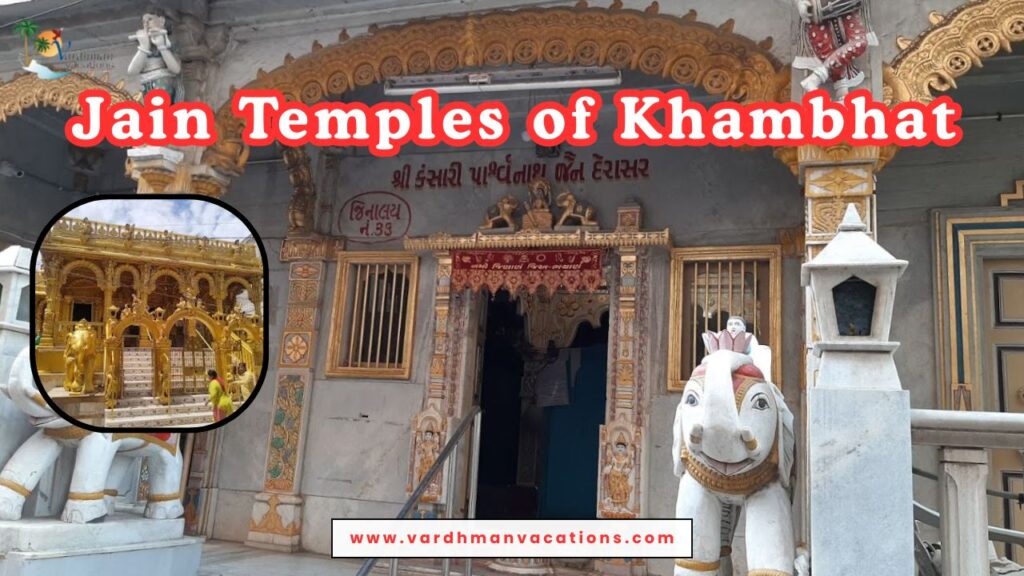Pawapuri is one of the most revered holy places for Jains. At the heart of this sacred town lies the Jalmandir, a beautiful white marble temple situated in the middle of Kamal Sarovar or Lotus Lake. The temple, built by the Swetambar sect, is surrounded by tranquil waters filled with blooming lotuses and countless birds, creating a serene and spiritual atmosphere. The architecture of the temple is considered incomparable in its elegance and detail.
Mahavir’s Nirvana and the Legend of Kamal Sarovar

According to Jain tradition, Lord Mahavir, the 24th and last Tirthankar of Jainism, attained Nirvana in Pawapuri in 490 BC. It is believed that after his cremation, his disciples collected the sacred ashes, and due to their great devotion, they started taking away the surrounding soil as well. Over time, this created a depression which later formed the Kamal Sarovar. To honor his memory, the Jalmandir was constructed at this sacred spot. Inside the temple, footprints of Mahavir are enshrined at the center, while those of his two chief disciples are placed on the left and right.
Nirvana Mahotsav and the 151 KG Laddu Offering
One of the most significant events in Pawapuri is the annual Pawapuri Ladoo Mahotsav, also known as the Nirvana Mahotsav, which coincides with Diwali, the day of Mahavir’s Nirvana. Every year, devotees from across India gather here to participate in this spiritual celebration.
A key highlight of the Mahotsav is the offering of a 151 kg laddu to Lord Mahavir. This massive laddu is prepared with pure ingredients and symbolizes the deep devotion and love of the community. After the offering, the laddu is distributed as prasadam among thousands of devotees. The event also features religious processions, chanting of Jain scriptures, bhajans, lighting of diyas, and a divine atmosphere filled with spiritual energy.

It is also said that during this sacred night, the cover over Mahavir’s footprints lifts automatically, and devotees feel the spiritual presence of the Lord, making it one of the most spiritually intense moments for Jains.
Historical Stupa and Nearby Temples
About 1 kilometer from Jalmandir, a stupa was built by King Nandivardhan, Mahavir’s brother, to commemorate the first sermon delivered by Mahavir after attaining omniscience in 556 BC. Nearby stands a Swetambar Jain Temple made entirely of white marble, and behind it lies the ancient stupa. Additionally, several other temples in the area include the Gurgasthan Temple, Gauna Temple, Naya Temple, and the Samasharan Temple, all of which reflect the deep spiritual roots of the region. Rickshaws and tongas are available for local transportation.
Pawapuri doesn’t have hotels, but there are several Jain Dharamshalas for pilgrims. Due to limited accommodation, travelers usually return to Rajgir for an overnight stay.
Exploring Bihar Sharif: A Blend of Religions and Dynasties
While heading towards Bakhtiarpur on NH-31, tourists can stop at Bihar Sharif, just 12 km from Pawapuri. According to legends, Lord Buddha once resided on Pirpahari Hill, and the Chinese traveler Hiuen Tsang also visited this place. Bihar Sharif houses a pillar from the Gupta period, adding historical value to the town.
The name Bihar is derived from the word Vihar, referring to the Buddhist monasteries built by Gopal, the founder of the Pala dynasty of Bengal. The term Sharif was added later, in honor of the 14th-century Sufi saint Pir Mukhdum Shah, also known as Sharif Admi. An important site for interfaith pilgrimage here is the Mazar of Malik Ibrahim Baya Saheb, which is visited by people of all religions.
How to Reach Pawapuri and Nearby Attractions
From Rajgir, tourists can take conducted tours that include Nalanda and Pawapuri. Alternatively, one can travel by service bus to visit Nalanda, Bihar Sharif, and Pawapuri in a single day. For better route planning, it is advisable to go to Nalanda first, then proceed to Bihar Sharif, and finally reach Pawapuri before returning to Rajgir. This route is well-connected with frequent buses, trekkers, and jeeps.







